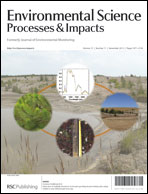Urinary nickel and prolactin in workers exposed to urban stressors
Abstract
The aim of our study is to verify whether the exposure to low Ni doses in urban air may have some effects on the prolactin values of outdoor workers exposed to urban pollutants. 334 workers have been included in the study and divided on the basis of gender, job, age, length of service and smoking habits. Each worker underwent urinary Ni and prolactin sampling. The t-test for independent samples, the Mann–Whitney U test for two mode variables (gender, smoking habit), the univariate ANOVA test and the Kruskal Wallis test for the variables in more than two modes (age, length of service and job duties) were performed on the total sample. Pearson's correlation coefficient (p two-tailed) among the parameters was evaluated both in the total sample and after the stratification by gender, smoking habit and job. Multiple linear regression was performed after taking account of the major confounding factors on the total sample and on the subcategories. The statistical tests showed a significant correlation between urinary Ni and prolactin both in the total sample and in the subcategories. We believe that the occupational exposure to low doses of Ni present in urban pollution may influence the prolactin values in exposed workers.


 Please wait while we load your content...
Please wait while we load your content...